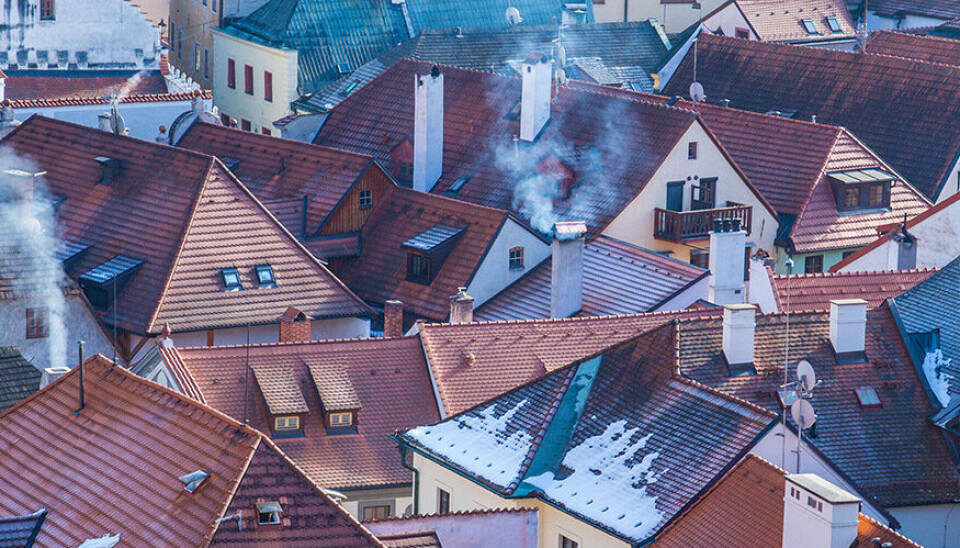THIS ARTICLE/PRESS RELEASE IS PAID FOR AND PRESENTED BY NILU - Norwegian Institute for Air Research - read more

Premature deaths due to air pollution continue to fall in the EU
Nevertheless, air pollution is still the largest environmental health risk in Europe, and more ambitious measures are needed to meet the health-based guidelines of the World Health Organization.
The European Environment Agency (EEA) has published its full Air Quality in Europe 2022 assessment, presenting the status of air quality in Europe, assessing the impacts of air pollution on health and ecosystems, and identifying sources of emissions to air.
According to the EEA analysis, air pollution continues to pose significant risks to health in Europe, causing chronic illness and premature deaths.
In 2020, 96 per cent of the EU’s urban population was exposed to concentrations of fine particulate matter (PM2.5) above the WHO guideline level of 5 microgrammes per cubic metre (µg/m3) of air.
Air pollution also harms biodiversity and damages agricultural crops and forests, causing major economic losses.
At least 238,000 early deaths
Poor air quality, especially in urban areas, continues to affect the health of European citizens. According to the EEA’s latest estimates, at least 238,000 people died prematurely in the EU in 2020 due to exposure to PM2.5 pollution above the WHO guideline level of 5 µg/m3.
Nitrogen dioxide pollution led to 49,000, and exposure to ozone to 24,000 early deaths in the EU.
As well as premature death, air pollution causes ill health and adds significant costs on the health care sector.
For example, in 2019, exposure to PM2.5 led to 175,702 years lived with disability (YLDs) due to chronic obstructive pulmonary disease across 30 European countries. As with previous years, the health impacts of different air pollutants should not be added together to avoid double counting due to some overlaps in data. This is the case for both mortality and illness.
From 2005 to 2020, the number of early deaths from exposure to PM2.5 fell by 45 per cent in the EU. If this trend continues, the EU is expected to deliver on the zero pollution action plan target of a 55 per cent reduction in premature deaths by 2030.
Nevertheless, further efforts will be needed to meet the zero pollution vision for 2050 of reducing air pollution to levels no longer considered harmful to health.
Loss of biodiversity, damage on forests, crops
Air pollution also harms land and water ecosystems.
In 2020, damaging levels of nitrogen deposition were seen in 75 per cent of the total EU ecosystem area. This represents a 12 per cent reduction since 2005 while the EU zero pollution action plan’s target is to reach a 25 per cent reduction by 2030.
According to the EEA analysis, 59 per cent of forested areas and in 6 per cent agricultural land were exposed to damaging levels of ground-level ozone in Europe in 2020.
Economic losses due to the impacts of ground-level ozone on wheat yields totaled about EUR 1.4 billion across 35 European countries in 2019, with the biggest losses seen in France, Germany, Poland, and Turkey.
More than half of fine particle emissions from energy use in buildings
The main source of particulate matter pollution in Europe is from fuel combustion in the residential, commercial and institutional sector, the EEA analysis shows.
These emissions are mainly linked to burning solid fuels for the heating of buildings. In 2020, the sector was responsible for 44 per cent of PM10 and 58 per cent PM2.5 emissions.
Other significant sources of these pollutants include industry, road transport, and agriculture.
Agriculture was also responsible for the vast majority (94 per cent) of ammonia emissions and more than half (56 per cent) of methane emissions. For nitrogen oxides, the main sources were road transport (37 per cent), agriculture (19 per cent), and industry (15 per cent)
Overall, emissions of all key air pollutants in the EU continued to decline in 2020.
This trend has continued since 2005 despite the considerable increase in the EU gross domestic product (GDP) over the same period, the EEA analysis notes.

This article/press release is paid for and presented by NILU - Norwegian Institute for Air Research - read more
This content is created by NILU's communication staff, who use this platform to communicate science and share results from research with the public. NILU is one of more than 80 owners of ScienceNorway.no. Read more here.
See more content from NILU:
-
Summer in Central Europe: Drought and wildfires to be expected
-
How do you design a healthier place to live?“I would prioritise easy, car-free access to everything you need in your daily life"
-
Fires in tropical forests affect more than just the forests
-
Engineer Sam Celentano found 222 grams of gold in a laboratory. What was it doing there?
-
Air pollution levels are still too high across Europe
-
Researchers have discovered how biological particles affect the clouds over the Arctic




































